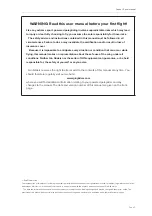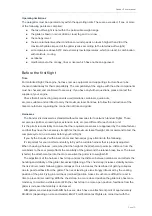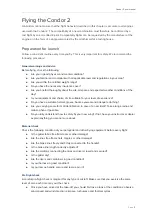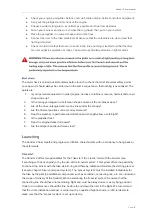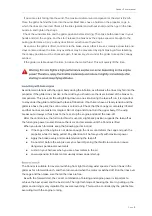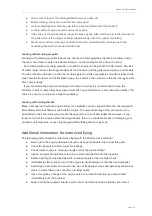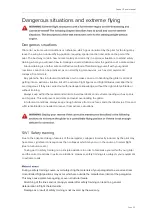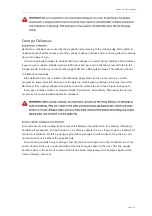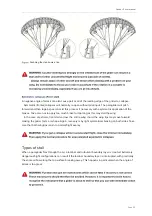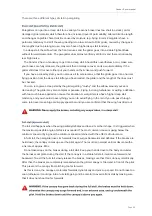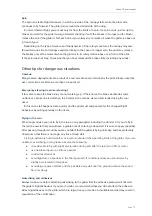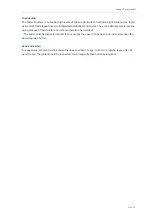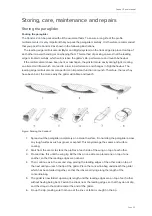
Condor 2 user manual
_____________________________________________________________________________________________________________________________________
If possible, start facing into the wind. The maximum lateral wind component at the start is 8 km/h.
Place the glider behind the trike into the wind. Most trikes have a holder on the propeller cage, in
which the lines are inserted. Check all the lines (parallel and without knots) and then get in the trike,
buckle in and tighten the straps.
Check the wind direction and the glider position before starting. Then take both brake lines in your
hands and start the engine. For the start, release the brakes as the engine speed is brought to the
pulling performance. Carry out any directional corrections with your feet.
As soon as the glider is lifted, control it via the brake lines so that it rises as cleanly as possible and
stays centered above the trike. Any overshoot may be prevented by slight braking. After stabilizing,
the canopy position must be checked again. If necessary, steer under the glider to keep the canopy
centred.
If the glider is stable above the trike, increase the motor thrust. This will quickly lift the trike.
Avoid lateral rotations with the upper body during the in
fl
ation, as otherwise the lines may fall into the
propeller. If the glider does not rise in the middle, you should use the risers instead of the brakes to
compensate. This prevents the wing falling down on one side. During the take-off run, it is important
to stay under the glider and follow the take-off direction. If both risers have a steady tension and the
glider is above the pilot, the control view is carried out. Check that the canopy is completely in
fl
ated
and that no lines are twisted or tangled. Do not stop and do not turn the upper body. If the wing
breaks out sideways or falls back to the rear, stop the engine and abort the take-off.
After the control view, the full motor thrust is used. A slight back position supports the take-off as
the full engine power is used. Release the risers and accelerate until the Condor is lifted.
When you launch forwards, keep the following points in mind:
●
If the cage of the engine is not stable enough, the risers can deform the cage and push the
propeller while it is being pulled. Pay attention to it before you
fl
y with maximum power
●
Apply the brake evenly and moderately during the take-off
●
Do not start before the wing is over your head. Opening the throttle too soon can cause
dangerous pendulum movements
●
Just sit in your harness when you are a few meters in the air
●
Low suspension for back motors usually allows easier start-up
The Condor is suitable for reverse launching from light to strong wind speeds. You can hook in the
glider as for a forward launch, and then turn around when the motor is switched off. Run the lines over
the cage and then make sure that all the lines are free.
As with the forward start, the correct combination of braking and engine power is important to
achieve the best speed and the best climb. The right technique of hooking the riser in, pulling up the
glider and turning is very important for reverse launching. This must be controlled by the pilot before
executing it with the engine running.
Page 15
Содержание Condor2
Страница 1: ...v1 0 March 2022...
Страница 48: ...www gingliders com...


